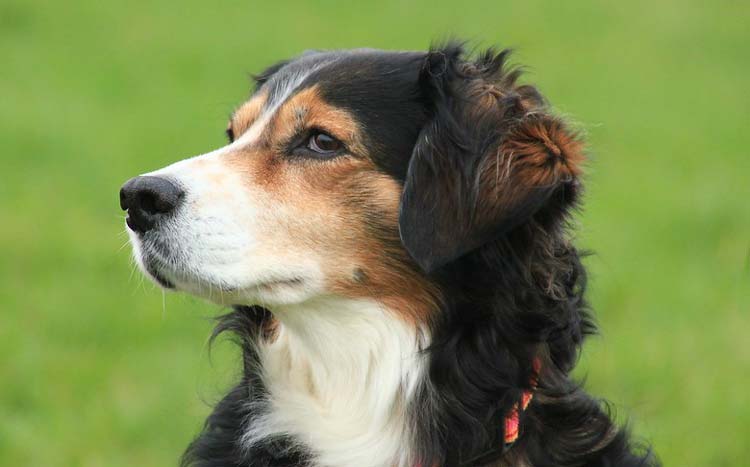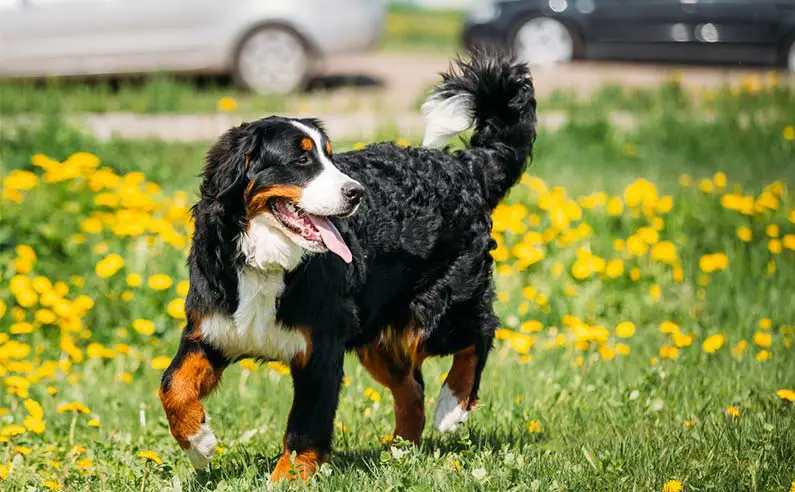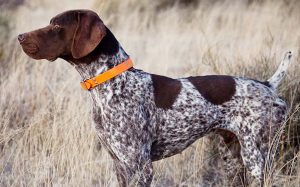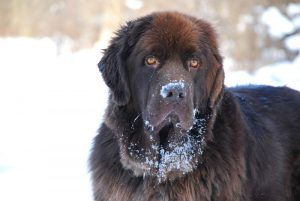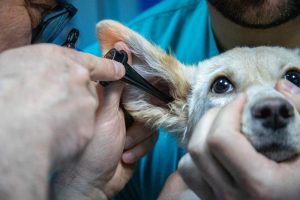
You were looking at dog videos and came across a beautiful German Shorthaired Pointer and decided you wanted one for yourself. Maybe you wanted to add to your ever-growing brood of dogs, or this is your first one, either way, you’re confused about what to feed this beast of a dog. Let us help you!
German Shorthaired Pointers (German Shorthaired Pointer) are energetic, large dogs that require the right amount of nutrition and exercise to live long, happy lives. Feeding them is not too tricky; however, it is a good idea to understand how much to feed your dog.
While the dogs are adept at fooling us into thinking they’re starving all the time, there is a limit to how much they can eat. Read on to find out when you should resist the puppy dog eyes!
See also:
Page Contents
What Kinds of Food?
Before you can get into feeding the dog, you need to understand what can and can’t be fed to a German Shorthaired Pointer. These large dogs thrive when provided the right foods and nutrients. They will look better, act livelier, and be energetic.
While there are multiple blogs and authority pages that will give contradicting advice, you’ll need to adjust the food you give the precious pup based on what works best for them. Every dog is different and so are their feeding habits. However, starting with a baseline understanding of the best diet for German Shorthaired Pointers is a good way to experiment.
Puppy Food
While it seems like there is no difference between puppy food and adult food, there’s actually more than you realize. Puppies are still growing; they require different nutrients, calories, and food than an adult dog of any breed would.
Puppy food usually has a higher protein level and is supplemented with the nutrients, minerals, and vitamins necessary for growth. The commercial puppy food you can purchase in the form of kibble or wet food is often too high in calories for an adult dog.
Whatever kind of puppy food you are purchasing, make sure it is premium and of high quality. Low-quality puppy food will be missing several key nutrients necessary for a balanced diet. Low-quality food, whether it is for puppies or adult dogs, will require you to provide larger quantities and therefore buy more food.
Raw Feeding
Raw feeding is a diet that has recently caught on and become popular among dog parents of all breeds. It is especially popular for breeds like the German Shorthaired Pointer. It involves a complete diet of raw meat, bones, and vegetables. The diet is supposed to be not only better for your dog’s digestion but overall well-being.
Whether it is a puppy or an adult, raw feeding is a possible way to provide all the necessary nutrients and minerals. Not only that, there are several added benefits to raw feeding:
- Gut Health: A raw diet is said to keep the gut in better shape than a diet of dry food. Processed food isn’t very healthy and correctly sourced; fresh meat seems to be the logical option for some dog owners.
- Weight: It is easy for dogs to start putting on lots of weight, especially the German Shorthaired Pointer. By providing a diet that optimizes their performance, you’re improving their metabolism as well. Even with all the exercise in the world, your dog won’t be an optimal weight until you feed them right.
- Smell: Surprisingly, a diet of raw meat can improve the smell around your dog. Since German Shorthaired Pointers are known to process meat better, a diet of meat can significantly lower flatulence and bad breath.
- Shiny Coat: A healthy dog looks like it. You’ll find a shinier coat, better skin, reduced itching, and flaking when following a raw diet.
- Overall Feeling: When on a raw diet, you’ll find that your dog is generally feeling better. You’ll see a marked increase in vitality and mood, reduced anxiety, and bad behavior. (Source: https://www.prodograw.com/dog-feeding-guide/german-shorthaired-pointer-feeding-guide/#cookie-notice-close)
However, raw feeding is still not considered the ideal diet. While there are several advantages to the diet, there are some disadvantages to consider before jumping right in.
- Training becomes harder since the meat needs to be handled and rationed to keep the puppy or adult dog from bloating.
- Bone fragments can hurt the gums.
- Large bones from weight-bearing animals can even break teeth.
- Lastly, there is a risk of infection for you and your dog if the meat isn’t handled correctly.
Puppy Raw Feeding
Raw feeding isn’t just for adult dogs. You can get your German Shorthaired Pointer puppy a raw food diet as well! It requires a bit more care; however, it is still possible. Here’s what to look out for when putting your puppy on a raw food diet!
- Fresh Meat Only: While adult dogs can handle a pathogen or two, puppies are especially vulnerable to the pathogens that develop when the meat starts to decay. Make sure the meat you feed your German Shorthaired Pointer puppy is fresh and stored correctly. Don’t leave the meat in your freezer too long; use it in a couple of days to ensure that your puppy won’t fall sick.
- Avoid Large Bones: Bones are a great part of a raw food diet as they keep the teeth clean and healthy. However, they can cause tooth damage. Not only will your dental bills be sky-high, but your dog will be in immense pain. Avoid the bones of large, weight-bearing animals like the cow.
- Variety: One type of meat does not hold every nutrient necessary. Mix up the kinds of meat you’re giving your puppy to maintain a healthy diet.
Dry Food
Dry food is the most accessible form of dog food to exist. There are multiple companies, flavors, and types of dry food or kibble. Whether you have a German Shorthaired Pointer puppy or an adult, dry food has the perfect mix of nutrients required for them to grow.
Some brands provide German Shorthaired Pointer-specific kibble as well. This dry food is said to have the perfect mix of ingredients for the average German Shorthaired Pointer. They come with several benefits, the core one being teeth cleaning.
Like with meat and bones, dry kibble is supposed to be just abrasive enough to help strengthen and clean the teeth.
Homemade Recipes
Homemade dog food is a sure-shot way to ensure that your dog is eating healthy and right. The recipes for dog food often involve a mix of meat and vegetables that are easy to source and require little to no cooking.
Unlike raw food diets, these homemade recipes don’t require gloves and careful handling for the most part.
While it seems like the ideal option, homemade recipes often don’t have all the necessary nutrients required for a growing or fully grown dog. That is why homemade recipes are often presented as a treat for your German Shorthaired Pointer rather than routine meals.
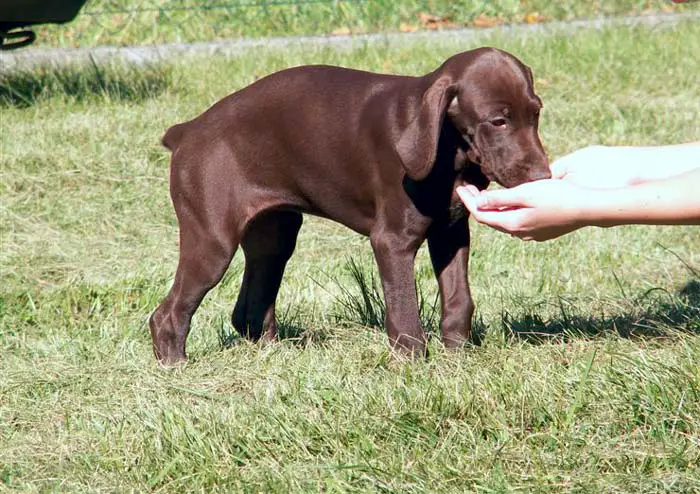
Bad Foods and Good Foods
Much like with any other breed, there are certain foods that your dog just cannot eat. Whether they seem healthy or not, many intestinal issues can stem from the wrong kind of food. Here is a helpful list of foods you cannot give your German Shorthaired Pointer.
- Chocolate
- Grapes/Raisins
- Onions
- Garlic
- Macadamia nuts
- Walnuts
- Sugar
- Cheese/Milk (If lactose intolerant)
- Liver (in large amounts)
- Avocados
- Mushrooms
- Apple Seeds
- Pits of any fruit
There are lots of healthy vegetarian treat options for your dog. Whether you’re using these to train or use in your homemade recipes, don’t worry about adverse effects.
- Baby carrots
- Cooked plain pumpkin
- Sweet potato fries without seasoning
- Broccoli
- Cooked green beans
- Cooked Squash
- Cooked Peas
- Apples without the seeds
- Bananas
- Berries
- Cooked rice/pasta
- Popcorn (unsalted or buttered, not for small/toy breeds)
- Cooked egg white
- Salmon
- Plain yogurt
- Cooked Oatmeal
Tip: If you’re looking into giving your German Shorthaired Pointer supplements, make sure you clear it with the vet. Some supplements can do more harm than good!
How Much Food Should I Give My German Shorthaired Pointer?
If you’ve narrowed down on a diet, then you’re probably wondering how much food to give a German Shorthaired Pointer. Well, this is where things get slightly complicated.
The amount of food you feed a German Shorthaired Pointer depends on several factors, including age and weight. To make things simpler, let’s consider feeding amounts by age.
German Shorthaired Pointer Growth Chart
| Age in months | Weight in lbs | Weight in kg |
|---|---|---|
| 1 month | 5 lbs. | 2.3 kg |
| 2 months | 14 lbs. | 6.3 kg |
| 3 months | 25 lbs. | 11 kg |
| 4 months | 34 lbs. | 15 kg |
| 5 months | 42 lbs. | 19 kg |
| 6 months | 47 lbs. | 21 kg |
| 8 months | 56 lbs. | 25 kg |
| 10 months | 60 lbs. | 27 kg |
| 12 months | 61 lbs. | 27.5 kg |
| 24 months | 62 lbs. | 28 kg |
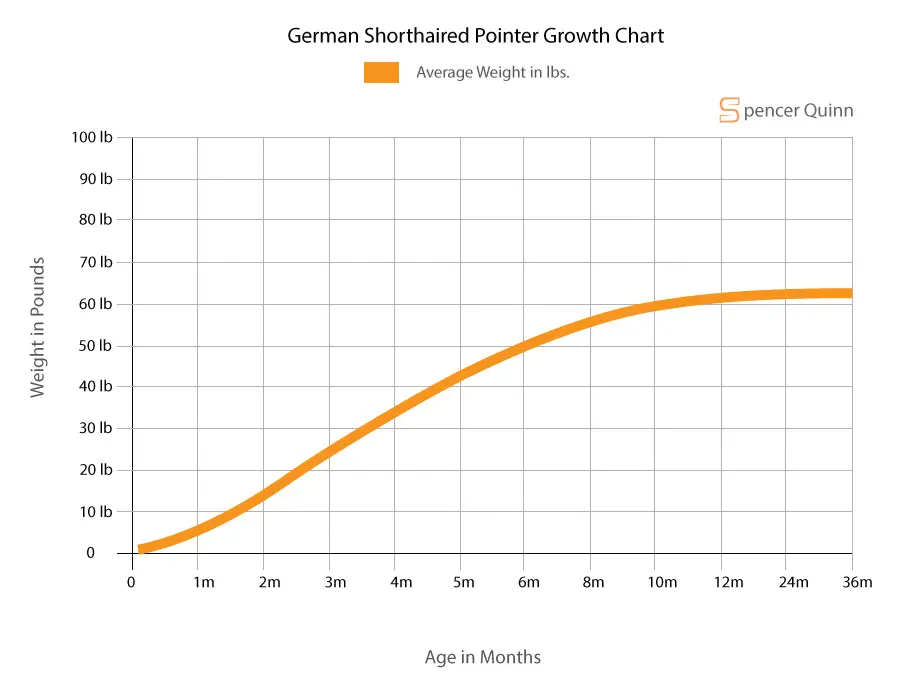
Puppy
Puppies are different. Not only do they need to eat more, but they will also demand to eat more. They will beg and cry until your heartaches. There is a limit to how much you can feed your puppy.
Whether it be treats, raw food, or homemade recipes, keep track of how much your puppy eats.
Unlike adult dogs, puppies need to be fed at least three times a day. Once they hit the 6-month mark, you can switch them to a morning and evening meal. However, in the days between, here’s a handy chart that can help you out.
| Number of Weeks | Number of Cups |
| 6 Weeks | ⅓ cup (Once a day, if they take to it) |
| 8 Weeks | ¼ to ½ cup at each meal |
| 10 Weeks | ½ Cup at each meal |
| 12 Weeks | ½ – 1 cup at each meal |
Puppies can only be started on solid food of any kind starting at six weeks. Even at the six-week mark, the new food, be it raw meat or dry kibble, slowly introduce foods in small amounts once a day. If your German Shorthaired Pointer puppy does not take to it, wait a while longer before introducing it once again.
Whatever type of food you’re feeding a German Shorthaired Pointer puppy, make sure there are 3-4 meals a day. Each meal needs to be substantial enough to fill their stomach and give them enough nutrients to grow.
While the chart is a good baseline amount, make sure you’re providing your puppy the amount of food they require and not what a blog tells you to.
If you’re unsure about the amount of food or the kind of diet your German Shorthaired Pointer puppy is on, talk to your vet. They can tell you if your puppy needs something extra. Don’t forget to clear any supplement use with your vet!
Adult
As adults, dogs don’t require as much food as when they were puppies. The average German Shorthaired Pointer would require 2 – 3 cups of dry food a day. These aren’t given at once, rather divided into two meals. Along with the dry food, there needs to be water.
If you’re practicing a raw food diet for your dog, then the ideal amount is 2-3% of their ideal body weight. It should also be noted that up to 40% of their raw food diet should be raw meaty bones. Not only should they eat the meat, but be able to eat the bone as well.
However, base your dog’s portion sizes based on their particular requirements. If they are a very active dog, they will require larger portions than a couch-potato dog. Ideally, a German Shorthaired Pointer needs to be provided enough stimulation and exercise to eat 3 cups of dry food a day.
Without the exercise, you’ll find that your German Shorthaired Pointer isn’t as healthy or happy as they should be.
Tip: Whether they are puppies or adults, do not free feed, that is, leave food out at all times; this leads to overeating and obesity.
If you’re basing the feeding amount on weight, then here’s a handy chart to help you feed your dog the perfect amount.
| Weight | Number of Cups |
| Less than 10 lbs | ¼ to ½ cup |
| 10 – 20 lbs | ½ to 1 cup |
| 20 – 30 lbs | ¾ to 1.5 cups |
| 30 – 40 lb | 1.5 to 2 cups |
| 40 – 60 lbs | 1.5 to 1.5 cups |
| 60 -70 lbs | 2.5 to 3 cups |
| 80 – 90 lbs | 3 to 4 cups |
| 100 – 150 lbs | 4 to 5 cups |
| More than 150 lbs | 4.5 to 6 cups |
Q&A
German Shorthaired Pointers are high-energy dogs that tend to lose weight faster than they can gain in their early years. If you see their ribs a little too clearly, then you’re probably worried about their weight. Ideally, the best way to build weight on a German Shorthaired Pointer is to increase their intake by ½ a cup. If you aren’t already, then use a high-quality, high protein food.
Raw food diets are also a great option when it comes to weight gain. The high levels of protein in the meat are guaranteed to help your pooch gain the weight they need.
Before switching diets or increasing food intake, make sure there isn’t a medical reason. Worms and other medical issues can cause rapid weight loss.
Technically, vegetarian diets are completely safe for dogs. As long as they are getting the proteins and other nutrients they require, a German Shorthaired Pointer will be fine on a vegetarian diet. Half your dog’s meals should be grain-based, and the other half needs to be a healthy mix of vegetables and proteins.
Proteins can be anything from lentils to cottage cheese. If you’re comfortable with it, cooked eggs are a great source of protein. Ensure that any other source of grain or protein you’re giving your precious pooch is not toxic to them. Even milk-based products like cheese can be out of the question at times.
If you’re not up for making every meal, vegetarian canned food options are available at major pet stores!
Knowing when to switch from puppy food to adult food can be tricky. A good estimate is to switch over at the one-year mark. By this time, not only would your German Shorthaired Pointer have been through their growth spurt, but they would be classified as an adult.
If you’re a little hesitant or believe that your German Shorthaired Pointer needs to be shifted over earlier, check with your vet!


